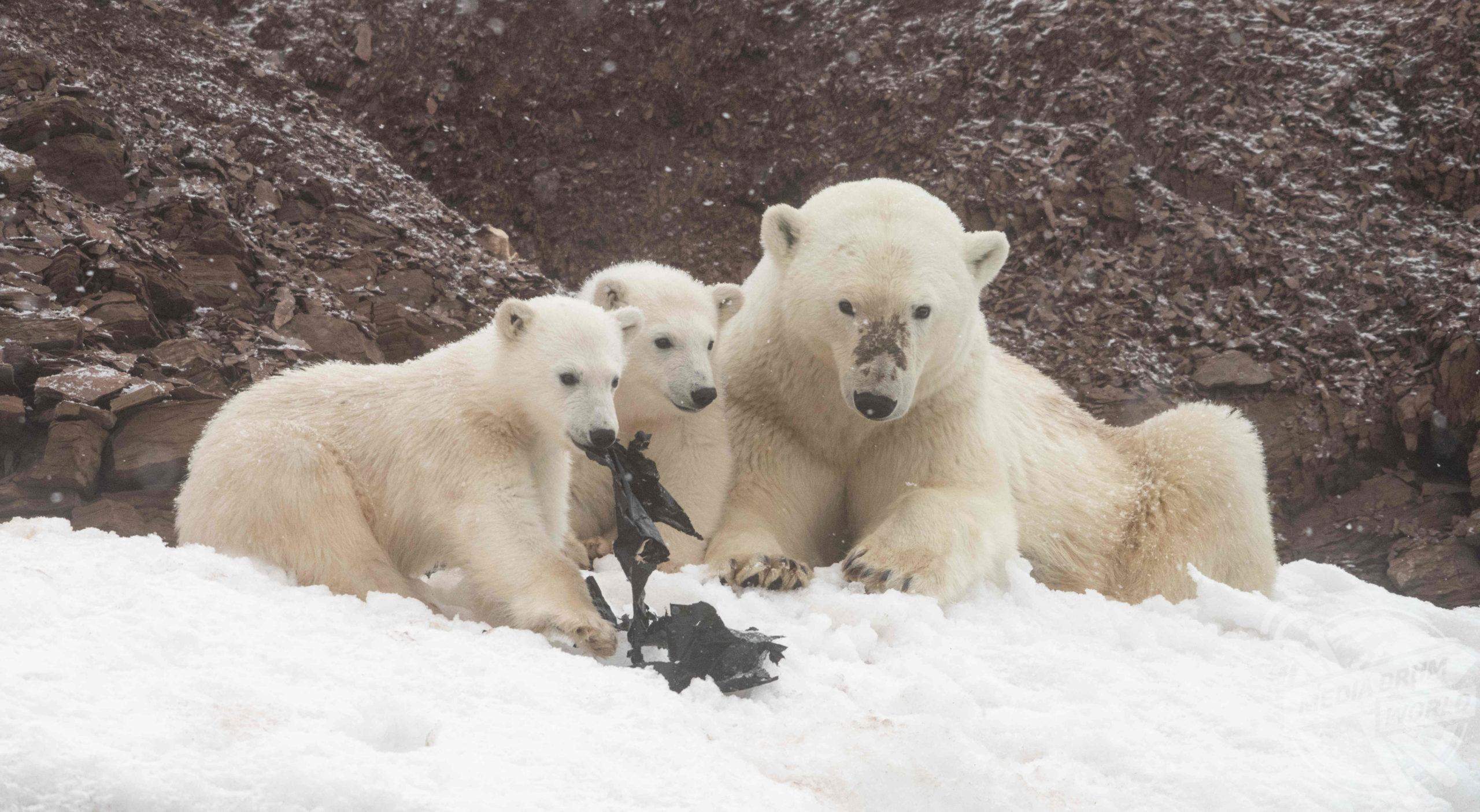
By Alexander Greensmith
HARROWING images have been captured of two baby polar bears EATING PLASTIC in the Arctic – highlighting the growing severity of plastic pollution.
An unsettling photo showed a pair of two-year-old sibling polar bear cubs playing tug-of-war with a black plastic bag they had found in the snow.
Another image captured one of the four-hundred-pound bears as it sat and ate the plastic like it was a meal.

Arctic expedition leader, Jens Wikström (30), from Gothenberg, Sweden, captured the shocking scenes at Lifdefjorden, Svalbard, Norway.
The adventurous Swede used Nikon D850 with a combination of 70-200mm and 200-500mm lenses to photograph the mammals, who played with plastic for 15 minutes. Jens, who has sailed for nine years, was appalled by the pollution, and watched in horror from 98 feet away.
“Sights like this are devastating. It’s no secret we have a lot of pollution, but I was processing in real time what happens to our ecosystem when we don’t take care of our shit. It ends up in the bellies of these animals,” said Jens.

“The kiddos went to the shoreline and dug up the snow to find this regular plastic bag. They started to rip it apart as a toy and ate a good chunk of it. They play with anything they can possibly get their hands on.
“On these remote islands of the Arctic, I’ve seen young curious bears and Arctic foxes and eating the plastic pollution that often drifts ashore with the currents from the Arctic Ocean Northeast of Svalbard or with the Gulf Stream that come up from Europe.
“I just hope people will think twice before leaving plastic bags or cigarette butts on the ground, you never know where it will end up.

“It is also concerning that microplastics are affecting the food chain of fish and seals, so plastic is already getting into the polar bear’s diet as they predate on these. And when it gets into the diet It can affect the milk of the mother as well.”
The polar bears are coping well in Svalbard despite the challenges of plastic pollution and climate changes. While they are often likely to start exploring the villages where 2,600 people live, fortunately these polar bears were quite well fed.
Population surveys in 2017 suggested there are only 250 bears that roam the coastal region around Svalbard, where the photos were taken. Despite this, many more may roam in the pack ice but are hard for humans to access.






